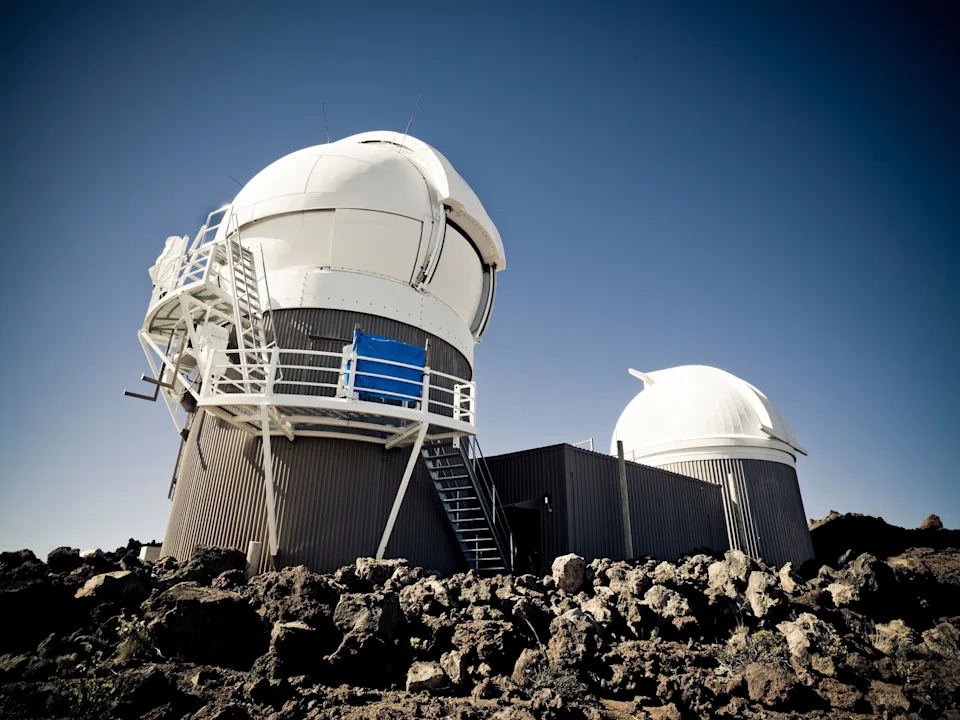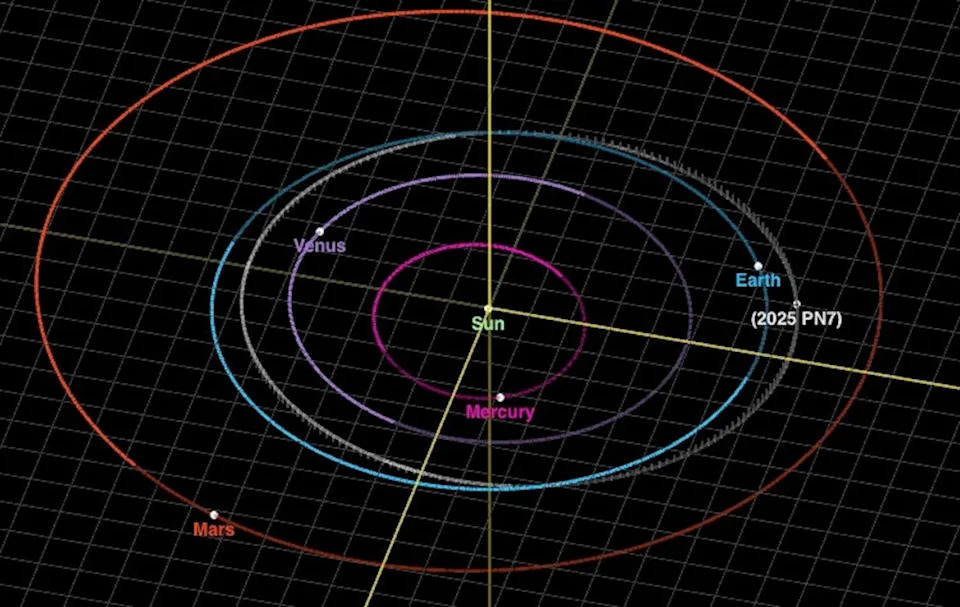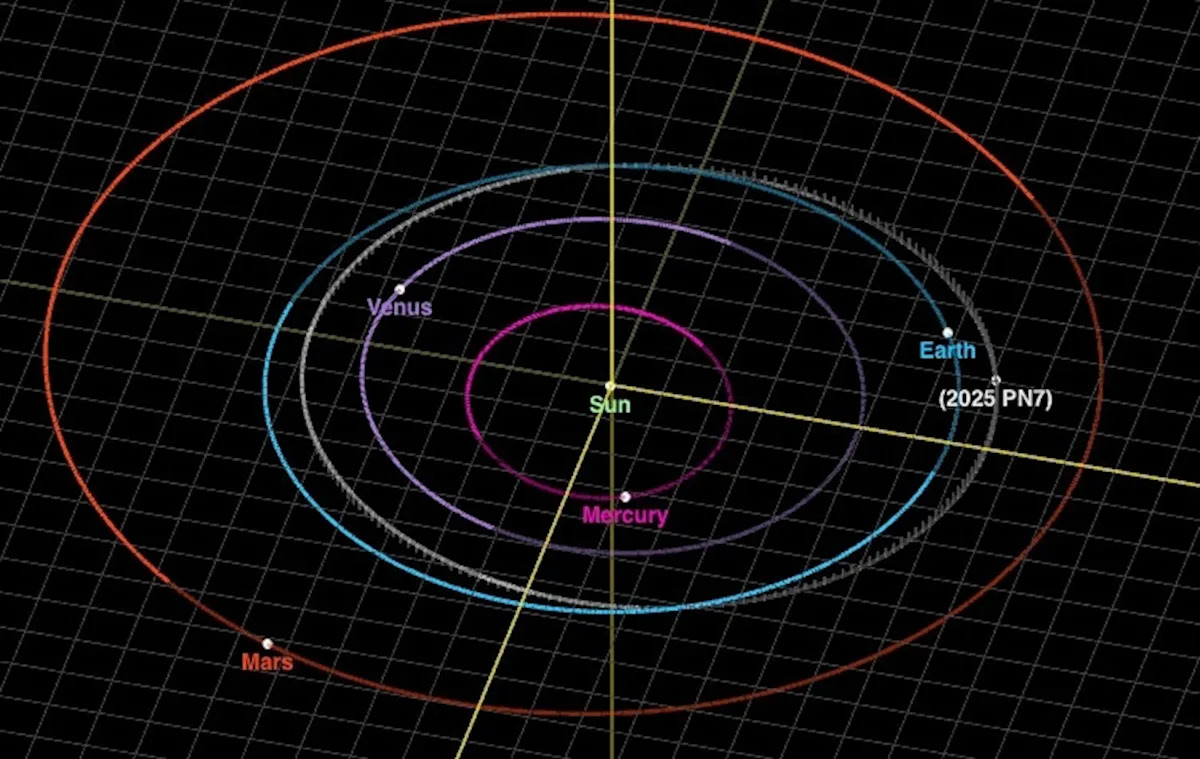Earth will have a visitor within its orbit for the next several decades, according to astronomers.
An asteroid named 2025 PN7 has become a “quasi-moon” to Earth, as it will be sharing an orbit with our planet until 2083, according to a paper published last month in IOP Science.
MORE: NASA releases high-definition images of a sunset on the moon
Quasi-moons are not real moons and don’t actually orbit the Earth, although they sometimes appear to do so for short periods of time, Phil Nicholson, professor of astronomy at Cornell University, told ABC News. Instead, they orbit the sun — like typical asteroids — on paths that are “very similar” to Earth’s.
“As a result, they sometimes ‘keep company’ with the Earth for years, or even decades,” Nicholson said. “Think of a wolf that follows the camp of a band of prehistoric hunters, looking for scraps, but doesn’t actually become a part of their band and eventually leaves.”

STOCK IMAGE/Getty Images – PHOTO: The Panoramic Survey Telescope and Rapid Response System (Pan-STARRS) is shown at the Space Observatory on the top of the Mount Haleakala Volcano in Maui.
The asteroid is considered a quasi-moon because “it only looks like it’s going around the Earth from our point of view,” Zoe Ponterio, manager of Cornell University’s Spacecraft Planetary Image Facility, told ABC News.
Its orbit is oval-shaped, so sometimes it’s closer to the Sun than Earth, while sometimes it’s farther, Ponterio said. When it’s closer to the sun, it’s going faster than Earth, and when it’s farther, it’s moving slower than Earth, which contributes to the object looking like it’s orbiting Earth from our point of view, Ponterio added.
“With the Earth and quasi-moon taking turns passing each other, the quasi-moon appears to be moving around us,” Ponterio said.
The quasi-moon’s orbit will continue to change, eventually switching to a horseshoe orbit. It will appear to be swinging back and forth across the sky as it passes Earth on the inside track before moving back to the outside and slowing down, Ponterio said.
Six other partial, temporary or quasi-moons have been recorded near Earth, according to astrophysicists at Northeastern University.

NASA – PHOTO: In this screen grab from a video illustrating orbits, 2025-PN7 is shown near Earth.
In 2024, Earth gained a “mini-moon” after an asteroid entered the planet’s orbit for about two months. The quasi-moon will stick around for much longer.
The object was discovered after the Pan-STARRS telescope at the Haleakala Observatory in Hawaii first took images of it on Aug. 29, the researchers said. However, older data indicate that the quasi-moon has been in orbit for six decades.
MORE: NASA could launch historic Artemis II mission around the moon as early as February 2026
Quasi-moons are typically quite small and not visible without a telescope, Nicholson said. The object is also extremely dim, with a magnitude of just 26, according to NASA, which would not be picked up by regular telescopes.
“This object is far too small, dark, and distant for us to see without very powerful telescopes, so the average person will not see a second moon in the sky,” Ponterio said.
MORE: There was once an ancient ocean filled with magma on the moon, scientists say
The telescope took repeated pictures of the night sky every couple of nights, Kelle Cruz, an associate professor of physics and astronomy at Hunter College in New York City, told ABC News.
“This discovery exemplifies that our Solar System is comprised of far more than just the familiar planets we learn about as school children,” Cruz said.
Projects like PAN-STARRS and the soon-to-start LSST Survey using the Rubin Observatory in Chile make it an exciting time to be an astronomer right now, Cruz said.
“These projects empower us to find all of the very small and faint things lurking not just in our Solar System, but also in our Milky Way Galaxy,” she said. “This new quasi-moon is just the beginning of a flood of new discoveries to come.”

